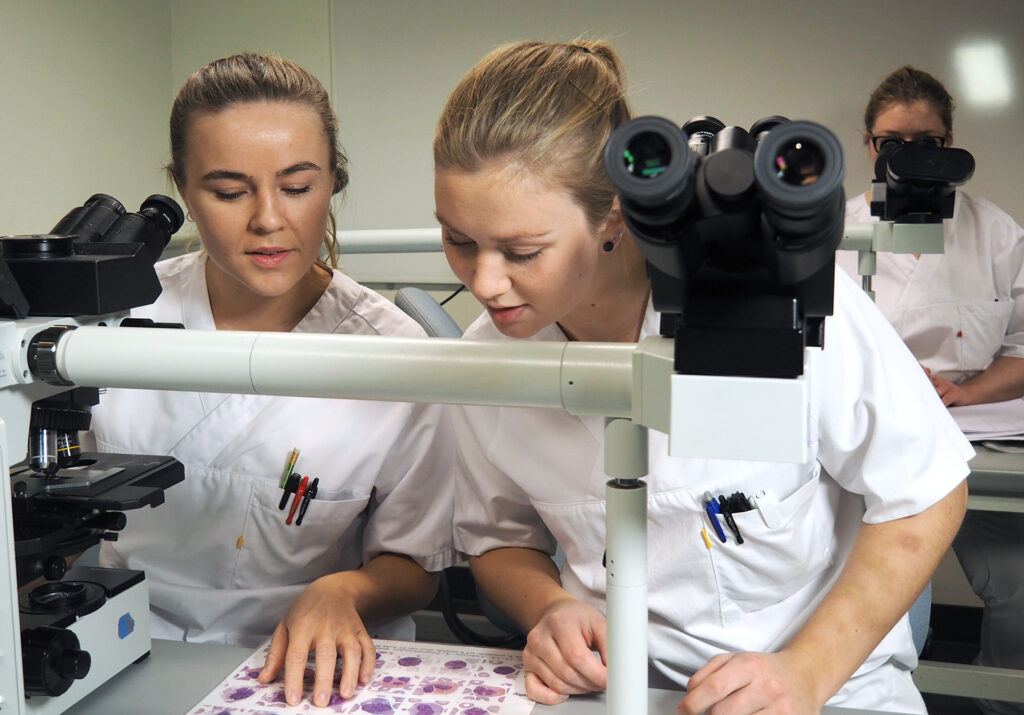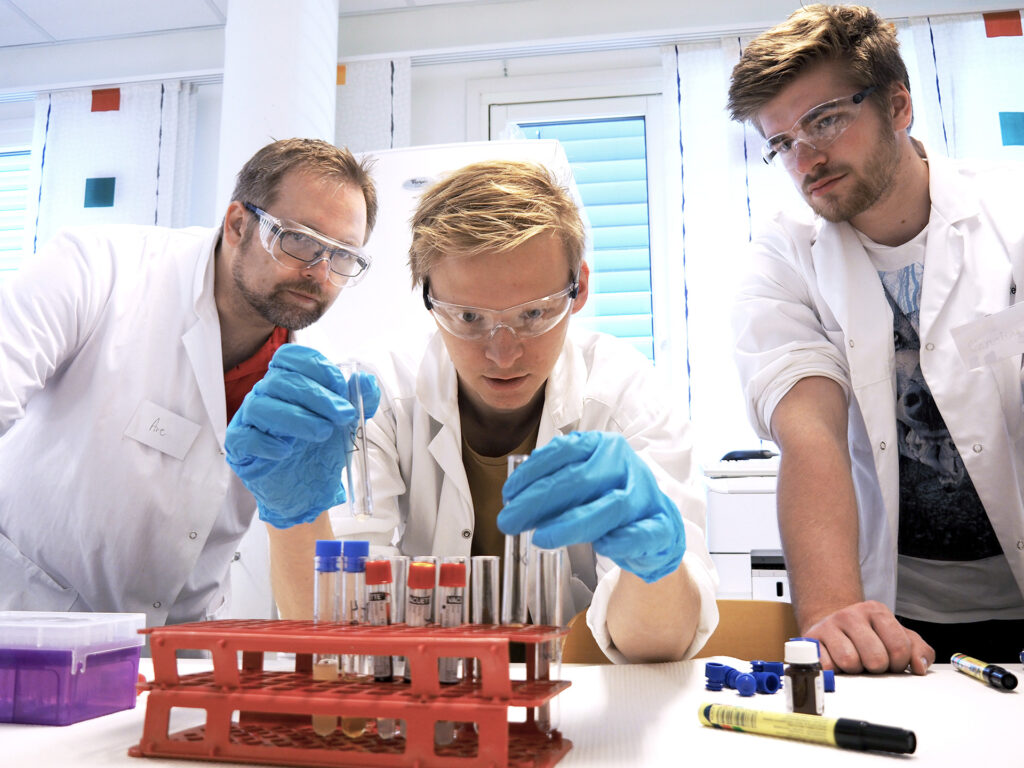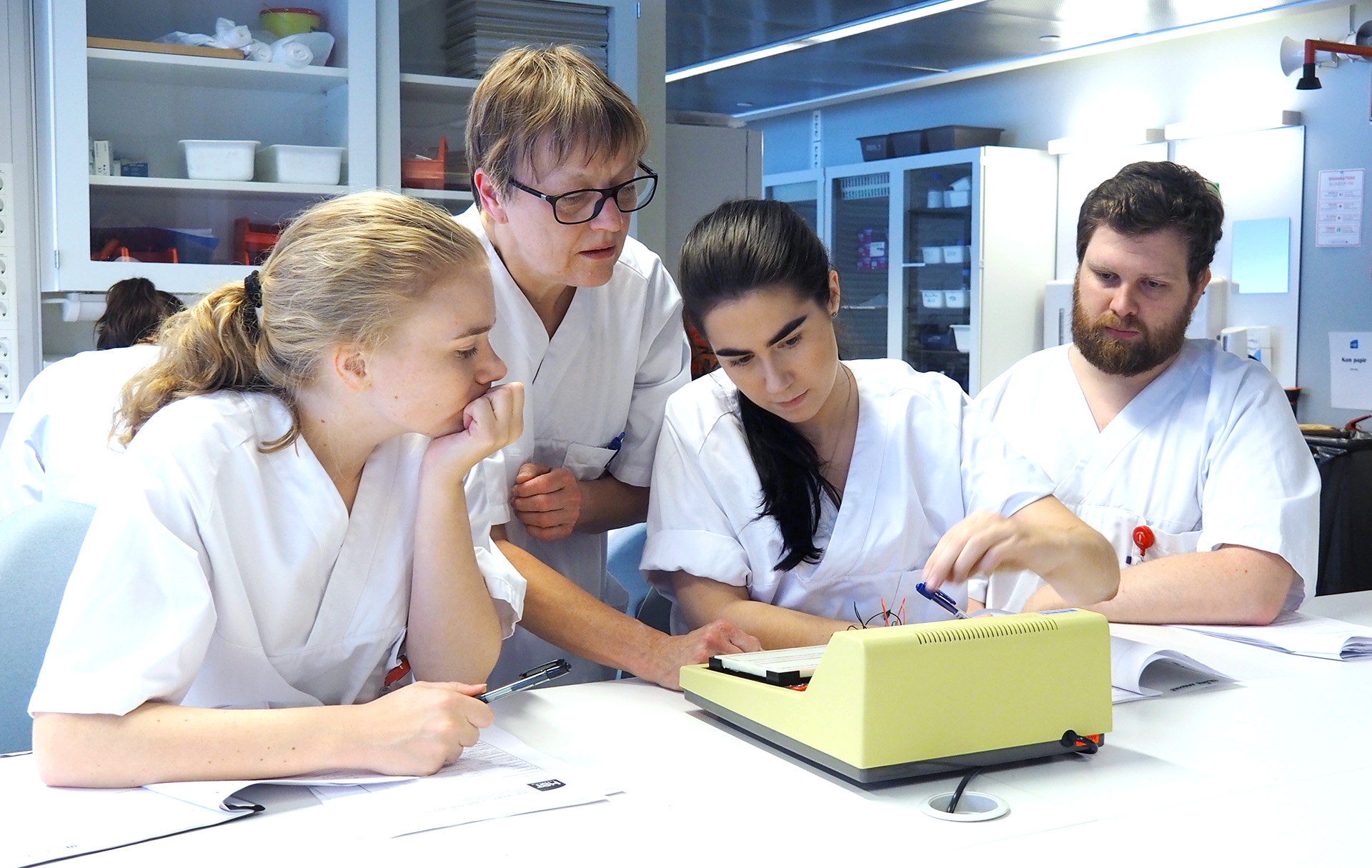The majority of those working in medical laboratories in hospitals are biomedical laboratory scientists. Their main task is to analyze patient samples (blood, urine, saliva, and all types of body fluids and tissues) and ensure correct test results using advanced technological equipment. The work of biomedical laboratory scientists is thus often crucial to the diagnoses and treatment patients receive.
The work in the laboratory focuses on the patient and the patient sample. Proper processing of sample material, choice of analytical method and interpretation of results are part of the biomedical laboratory scientists’ core competence. They are responsible for all handling of patient samples, often all the way from the collection of the samples, until a quality assured test result is available. The doctors use the test results for diagnosis, treatment and follow-up of the disease.
Essential effort
Situations like the corona pandemic clearly demonstrates the importance of biomedical laboratory scientists and medical laboratories are for the health care system and for each patient in particular. And also for the whole community and decision makers in general to provide information on the extent and spread of the virus. It is the biomedical laboratory scientists who analyze the tests to detect, possibly exclude, virus so that the rest of the health service can isolate and treat. Advanced genetic engineering methods are used for virus detection. These are methods that biomedical laboratory scientists have specialized expertise in. Both the possibilities and limitations of the methods.
Limitations are important to have knowledge of: we hear about false positive and false negative test results. Knowing the sensitivity and specificity of the methods is important in order to make good interpretations of the test results. Sensitivity is the ability of the analysis to show a positive result when the patient is infected, while specificity is the ability of the analysis to show a negative result when the patient is not infected.
When the virus is detected and patients are admitted for treatment, the biomedical laboratory scientists’ work is absolutely necessary to follow up the patient and contribute with laboratory data on for example fluid and respiratory status and kidney function. In general, about 70 percent of decisions made regarding diagnosis and treatment of patients in our hospitals are based on laboratory data.
We are now in the midst of a pandemic that has presented challenges to the health care system and society as a whole that have been difficult to imagine. It has clearly shown how vital it is with high-quality medical laboratories with top-qualified personnel.
Forecasts, even before this outbreak, show that we will experience a shortage of biomedical laboratory scientists in Norway. Over the next 15 years, it is estimated that we need 50 percent more biomedical laboratory scientists. There is a need to increase educational capacity.
Education of new biomedical laboratory scientists
It is very important that we also have enough biomedical laboratory scientists in the future. Every year, 80 biomedical laboratory scientists graduate from NTNU and start working in medical laboratories across the country. The study programme combines courses in medical laboratory technology, natural sciences and social sciences. We emphasize theoretical knowledge and practical skills. Each student has approximately 500 hours of student-active learning activities related to laboratory work during the course of study.

The biomedical laboratory science education is a three-year education leading to a bachelor’s degree in biomedical laboratory science with a biomedical laboratory scientist authorization. The purpose of the programme is to qualify students for work in all types of medical laboratories. Students can also continue with 2-year master’s degree programmes.
NTNU offers biomedical laboratory science study programmes in both Trondheim and Ålesund.

This blog post is also published at Gemini.no in Norwegian – Hva gjør en bioingeniør?



